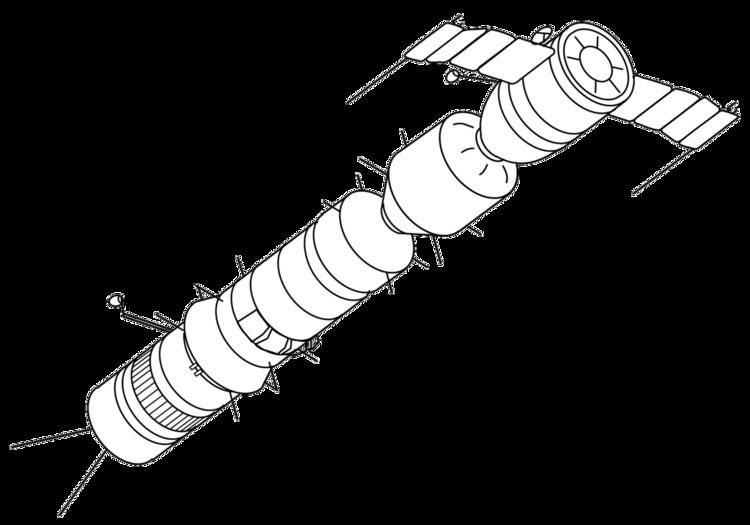Manufacturer OKB-1 Applications Orbital tug Launched None | Status Cancelled | |
 | ||
Regime Low EarthMedium EarthCircumlunar | ||
Soyuz-B (Russian: Союз-Б meaning Union-B) or Soyuz 9K (Russian: Союз 9К) was a proposed Soviet spacecraft, which was designed for use as an orbital tug. A number of applications were proposed for it, including use as part of the Soyuz A-B-V complex for manned circumlunar spaceflight.
The Soyuz 9K was intended to have been launched into low Earth orbit by the Soyuz 11A511 carrier rocket. Following launch, it would have been refuelled by up to three Soyuz-V tankers, before commencing its mission. It was primarily intended for use in boosting manned Soyuz 7K and Soyuz-P spacecraft into higher orbits; the Soyuz-A onto a circumlunar trajectory for manned Lunar exploration, and the Soyuz-P into a higher orbit to intercept and destroy another spacecraft.
The Soyuz 9K consisted of two modules: the main spacecraft, and a docking module, NO (Russian: НО). The NO module housed rendezvous and docking systems for the Soyuz-V, as well as equipment for transferring fuel, and additional manoeuvring thrusters. Once the payload spacecraft had docked, the NO would be jettisoned, and the main engine would ignite to propel the Soyuz 9K and its docked payload into a higher orbit.
Following the cancellation of both the Soyuz 7K and P programmes; the former in favour of the LK-1 spacecraft, and the latter in favour of unmanned anti-satellite programmes, the Soyuz 9K was no longer required, and it too was cancelled.
